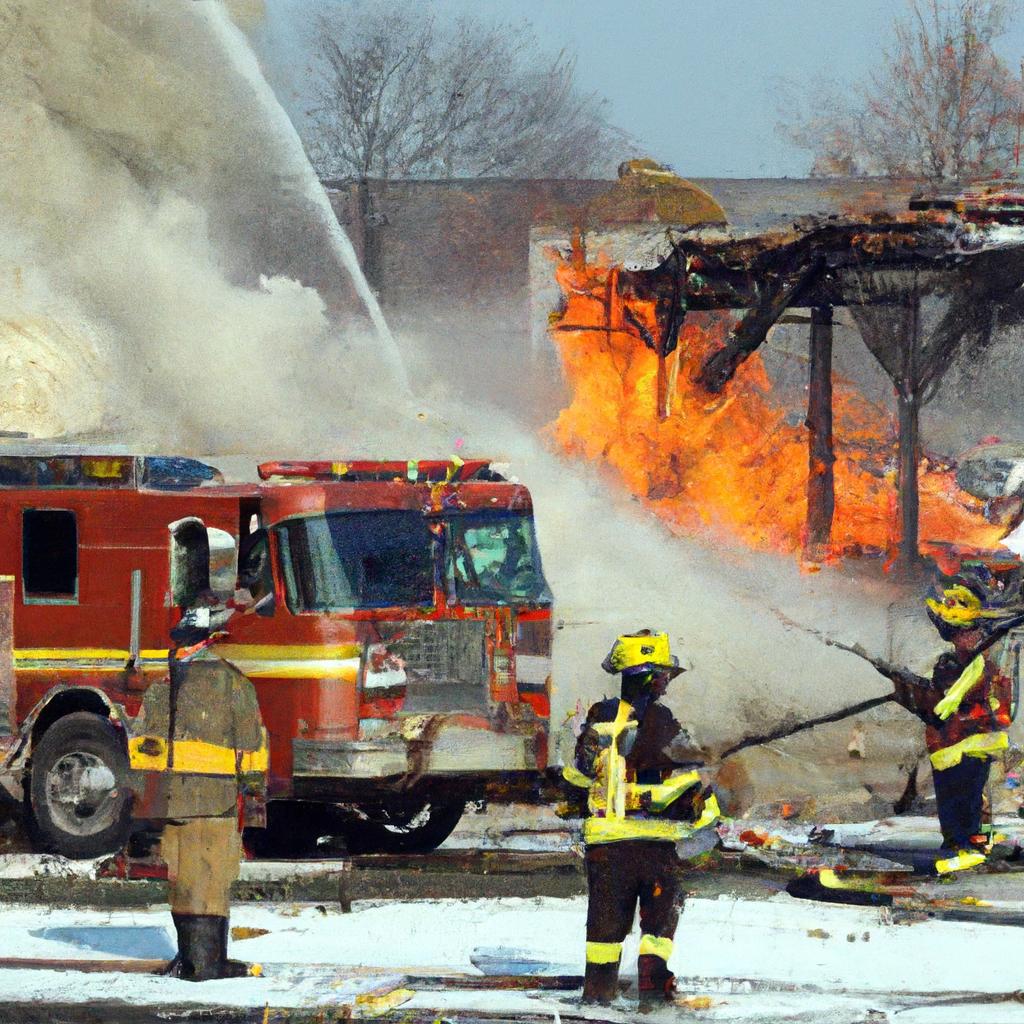The Importance of Hazardous Chemical Training for Firefighters
In the aftermath of the fiery train derailment that occurred in eastern Ohio in February, fire chiefs from the responding departments emphasized the need for enhanced training on hazardous chemicals for firefighters. Despite acknowledging the challenges of fully preparing for disasters of such magnitude, they highlighted the importance of equipping first responders with the necessary skills and knowledge.
The National Transportation Safety Board conducted a two-day field hearing in East Palestine, Ohio, focusing on the emergency response to the Norfolk Southern derailment. One critical decision made during the incident was the controlled release and burning of toxic vinyl chloride from five tank cars to prevent potential explosions, leading to the evacuation of half of East Palestine’s residents.
While officials defended the decision as the best course of action to avert a catastrophic explosion, concerns lingered among residents regarding potential health effects. Despite assurances from state and federal authorities about the safety of the town’s air and water quality, questions persisted about the long-term implications of the incident.
Fire Chief Keith Drabick and other first responders highlighted the consensus within the command center that releasing and burning the chemicals was the least harmful option available. However, they underscored the need for additional training, particularly for volunteer firefighters who lack hazardous materials handling expertise.
Challenges faced during the initial response included communication issues among departments due to incompatible radios and delays in obtaining crucial information about the train’s cargo. The absence of hazardous materials training for volunteer firefighters further complicated the situation, emphasizing the importance of comprehensive preparedness measures.
The cleanup efforts at the derailment site, overseen by the Environmental Protection Agency and Ohio officials, have been ongoing. Norfolk Southern has committed significant resources to aid in the town’s recovery, with the total cost of the incident expected to reach nearly $400 million. The NTSB’s preliminary findings attributed the derailment to an overheating bearing on one of the railcars, underscoring the need for improved safety measures in the railroad industry.
The incident sparked nationwide concerns about railroad safety, prompting congressional proposals for reforms. Norfolk Southern’s CEO faced scrutiny at Senate hearings, where he pledged to address the issues arising from the derailment. However, tensions escalated as the railroad faced criticism for withholding documents related to its operational decisions and workforce reductions.
In response to the railroad’s reluctance to cooperate, House Committee Democrats expressed frustration over the lack of transparency and accountability. The ongoing NTSB investigation was cited as a reason for withholding internal documents, but committee members contested this explanation, emphasizing the need for thorough oversight and transparency in the aftermath of such incidents.
In conclusion, the train derailment in Ohio underscored the importance of adequate training for firefighters and highlighted the need for improved safety measures in the railroad industry. As stakeholders continue to address the aftermath of the incident, collaboration and transparency are essential to prevent similar disasters in the future.
Fire Chiefs Call for Enhanced Training as Ohio Train Derailment Raises Concerns on Hazardous Chemicals
Recently, a train derailment in Ohio has once again raised concerns about the transportation of hazardous chemicals through communities. The incident not only highlighted the potential dangers posed by such materials but also underscored the need for first responders to have adequate training to handle such emergencies effectively.
The Ohio Train Derailment Incident
The train derailment in Ohio involved several rail cars carrying hazardous chemicals, including flammable liquids and corrosive substances. The incident led to a temporary evacuation of nearby residents and a large-scale response from emergency services, including firefighters and hazmat teams.
The situation highlighted the importance of having well-trained first responders who can assess the risks, contain the spill, and protect both human life and the environment. In this case, the quick and coordinated response helped prevent a more significant disaster from occurring.
Why Enhanced Training is Essential
Fire chiefs and other emergency responders have long emphasized the need for enhanced training to deal with hazardous materials incidents. These types of emergencies require specialized knowledge and skills to mitigate risks effectively. Without proper training, first responders may be ill-equipped to handle the complexities of hazardous chemicals incidents.
Enhanced training can help first responders:
- Identify hazardous materials
- Understand the risks posed by different types of chemicals
- Implement proper containment and decontamination procedures
- Coordinate with other agencies and stakeholders in an emergency
The Benefits of Proper Training
Proper training for hazardous materials incidents offers several benefits, including:
- Improved safety for first responders and the public
- Reduced environmental impact from chemical spills
- Enhanced preparedness for emergencies
- Effective coordination among response agencies
Practical Tips for First Responders
For first responders looking to enhance their training in handling hazardous materials incidents, consider the following tips:
- Participate in specialized hazmat training courses
- Stay updated on the latest regulations and best practices
- Practice scenario-based drills to improve response capabilities
- Collaborate with other agencies and industry partners for joint training exercises
Case Study: Successful Response to a Chemical Spill
In a recent incident involving a chemical spill at a manufacturing plant, well-trained first responders were able to quickly contain the spill, evacuate the area, and prevent any injuries or environmental damage. The successful response was attributed to the responders’ training and experience in handling hazardous materials incidents.
Conclusion
Enhanced training for first responders is crucial in ensuring a swift and effective response to hazardous materials incidents like the recent train derailment in Ohio. By investing in training and preparedness, emergency services can better protect their communities and the environment from the potential risks posed by hazardous chemicals.


